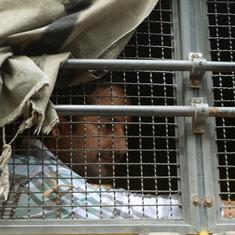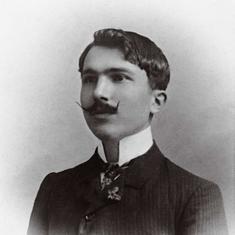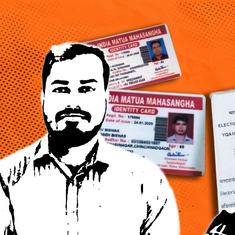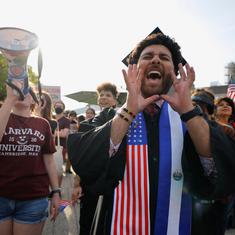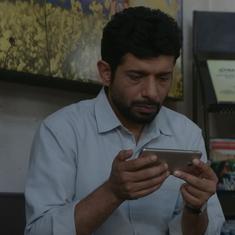There was various speculation about causes. Most likely was that the stench came from one or two local factories – the gin distillers John Watney and Co and the glucose manufacturers Garton Sons and Co. But no one really knew. Moreover, the local council seemed to be actively avoiding trying to find out, and avoiding attempting to do much about it.
As a local paper at the time noted, “We can get to the moon, phone relatives in Australia, perform miracles of surgery but a simple matter like getting rid of a smell seems to baffle everyone.”
Residents were especially annoyed as the local council insisted they use (expensive) smokeless fuel to cut air pollution yet seemed to do nothing about the stink. They suspected that the council found the jobs and rates revenue offered by the factories too important to risk.
In 1972, a group of scientist-activists decided to make the smell an early project in ‘community science’. Called the British Society for Social Responsibility in Science (BSSRS or ‘Bizrus’ to their friends), they wanted to see if a bit of grassroots research could help unlock the mystery.
They started by contacting two housewives on a local estate who were leading a protest; then they met with the tenants’ association and the local doctor, as well as the local councillors and the Vicar of Battersea. The next step was a survey of residents’ experiences of the smell, which BSSRS hoped would both collect some of the missing information and put pressure on the local council for more research, and possibly more action.
Their survey returned over 400 responses. Only 2% had failed to notice the smell, and attitudes to it ranged from neutral (2%) to very annoyed (67%). It was described as sickening, nauseating, and “so overpowering that even a skunk would have to be equipped with breathing apparatus”. People said they felt embarrassed to have friends visit. Pregnant women complained it caused vomiting and headaches. People with asthma said it aggravated their condition. The survey had, at least, helped establish it was a problem.
Publicity about the survey – and a petition that ran alongside it – helped fuel more press coverage. Finally, the council health committee decided to send a deputation to Gartons, who agreed to make plans to reduce the smell, thus at least implicitly admitting responsibly for causing it, which they had previously tried to deny. Locals felt the distillery contributed too – not as consistently but more powerfully when it did – and had maybe escaped most of the criticism. But overall, things seemed to improve.
Partly inspired by the experience, BSSRS staff member David Dickson later wrote inNew Scientist magazine calling for “Community Science Resource Councils”. The idea, which sadly never took off, was a sort of scientific equivalent of legal aid. It would have provided scientific knowledge and technical expertise to minority and under-represented groups, and also allowed them a greater chance to shape what questions get asked and answered by science. “Perhaps the greatest gain would be in public education,” he wrote. “Members of the community would be able to answer back.”
People today often call for evidence-based policies, but the problem is that the power to collect evidence isn’t evenly distributed. In the 1970s, BSSRS worked to change this – and build a science for the people.
§

© Damien Tran
It began in a kitchen.
It was 1968. Protests were erupting the world over, a heady mix of civil rights, feminism, anti-war, anti-capitalism, civil liberties and the early stages of the modern environmental movement. The production and deployment of chemical and biological weapons had caught the attention of several activist groups, especially students who were angry that research undertaken on their campuses was supporting such activities.
Professional scientists were concerned too. The A-bomb had spurred pacifist scientists to organise after World War II, in groups like Pugwash. But these seemed slightly narrow in focus, at least to some of the younger protesters, slightly old and slightly out of touch. A group in London started to meet to discuss how they might build a slightly different type of scientist-activist movement.
But the members had young kids, say Hilary and Steven Rose, key actors in the founding of the movement, so meetings would be held in their kitchens. In early 1968, they ran a conference on chemical and biological warfare in London. Buoyed by its success, the meetings continued and “gradually got larger,” says Jonathan Rosenhead, another former member, “until we started meeting in pubs and then in lecture rooms in Birkbeck [College]”. By this stage, he says, “they were no longer committee meetings, but discussion meetings”.
The next step was to launch a larger, more formal group. BSSRS was born.
In the spring of 1969, BSSRS held its inaugural meeting at the Royal Society. It opened with a speech from Nobel Prize-winning scientist Maurice Wilkins as president. A statement of support was signed by a long list of the great and the good, including J D Bernal, Lawrence Bragg, Francis Crick, Richard Doll, Eric Hobsbawn, Julian Huxley, Hans Krebs and Bertrand Russell.
A manifesto – lacking a date, but seeming to be from 1970 – explicitly recognised the dangers of science, but was keen to eschew any whiff of anti-science. The public, it said, had been misled into thinking that science was complex, only understandable to elite experts. “There are no ‘experts’ to decide whether supersonic travel is preferable to the disease-resistant varieties of wheat.”
“Science and technology serve the interests of those who fund them. And in serving these interests, they help perpetuate them. To a considerable extent, therefore, science and technology have become instruments of state and industrial power.”
BSSRS would work to stimulate political debate among scientists and draw public attention to these issues. They’d do research, work with the media, support the formation of local groups and circulate a regular newsletter.
The first BSSRS newsletter was three sheets of single-sided typewritten print, held together with a single staple, the title and date – April 1969 – handwritten across the top. It announced the first of what would be regular discussion meetings, with a note to see New Scientist for more details.
The first event – reportedly a full house of around 100 people – discussed the problems of sponsored research. Indeed, if it weren’t for the faded typeset and smell of old paper, the early BSSRS agenda could be from today: science education, public attitudes to science, warfare, genetic engineering, pollution and privacy of personal data.
The second newsletter mentions the seeds of local groups in Birmingham, Liverpool, Imperial College London, Leeds, Brighton and more. By mid-1970 there’d been an inaugural meeting of the Oxford SSRS, with Nobel Prize-winning biochemist Dorothy Hodgkin appointed honorary president. Edinburgh SSRS had a particularly successful launch, with prestigious speakers and coverage in the Scotsman – nearly 200 attended the meeting, though the newsletter reports that disappointingly few of these joined the Society. Its follow-up event, on pollution, made New Scientist’s review of the year. Cambridge SSRS also started with gusto, involving scientists, students and local farmers in an investigation of antibiotic resistance and the local sewage.
On the surface, it was a reasonably establishment group of scientists debating the ethics of their work. But really, they wanted little less than revolution.
§
Science, BSSRS believed, was humanity’s greatest hope, but it was also becoming dangerously corrupt. Science could change the world, but it also needed to change itself. Scratch away the Nobel Prize winners and Royal Society launch, and the core of BSSRS were 1970s radicals schooled in consciousness-raising women’s groups and anti-war sit-ins. They had a different attitude to science, the state and ideas of authority.
Joe Hanlon arrived in London from Boston in 1971 to work for New Scientist. He’d just finished a PhD in high-energy physics and had won some prizes writing for a computer trade magazine. As he describes it, 1968 was a year when, in Europe, a lot of political space opened up – new, more radical ideas were somehow socially acceptable and new social movements being formed – whereas in the US, there began a shutdown of dissent. Disgusted by a country that would elect Nixon, he wanted out.
Marianne Craig came from Scotland via New York and a brief stint as an air stewardess. Pan Am had offered a chance to see the world, she tells me, “But after doing it for a year I was bored, I wanted to use my brain.” She became involved in anti-war work, and worked for an underground newspaper. “I read voraciously and joined the women’s movement, and went on all these big demos in DC. It was a very exciting time. There were the Black Panthers. The Young Lords.”
Returning to the UK to study sociology at Edinburgh, she became one of the founder members of the Edinburgh Women’s Liberation Workshop and through this met a group of radical scientists. She transferred her degree to North East London Poly (“which was doing more of the kind of sociology I wanted”) and started squatting with other BSSRS members.
Bob Young also came via the US, although he was radicalised in the UK. An American living in Cambridge, he was building a career in the history and philosophy of science, wasn’t especially left-wing and at first didn’t feel comfortable with the idea of civil disobedience. “I just felt awful,” he tells me of the time a girlfriend took him to a sit-in in Trafalgar Square protesting against the Vietnam War. But the idea of protesting got easier, and soon his politics started to influence his academic work.
“I began to think that if we want to change society, then the theory of knowledge can’t be exempt either. There are no safe places.” Invited to give a paper at a 1970 BSSRS conference on the social impact of modern biology, Bob began to apply his growing political awareness to his analysis of science, and was excited by the new intellectual insights and challenges this offered, eventually founding the Radical Science Journaland leaving Cambridge for a career in publishing.
§

© Damien Tran
BSSRS weren’t the only ones on the scientist-activist scene. Back then, perhaps as now, it was much less socially acceptable to be left-wing in the US, at least compared to the UK. Perhaps for that reason, Americans who chose to identify as such were particularly ebullient.
“We were basically a load of shit-kicking folks and we made sure our voices were heard,” said Al Weinrub at a 2014 conference in Amherst, Massachusetts, looking back on the American group Science for the People. “What those voices were basically saying was, ‘Look, the scientific work and technological capability that we have in this country are being categorically misused by the 1 per cent… by this globalised network of power. And it was all in the service of their interests’.”
Science for the People emerged around the same time as BSSRS but, in contrast to their British counterparts, took an openly revolutionary stance. An FBI file helpfully collates news clippings of one of their first events, a protest at the 1970 American Association for the Advancement of Science meeting in Chicago.
The chairman of the Atomic Energy Commission was forced to flee, according to theWashington Post, as “two dozen radical young scientists” took over the podium, accusing him of “the crime of science against the people”. Hotel security men shut off the microphone, but the protestors had brought their own bullhorn. There was “minor bloodshed”, the Post reports, as the wife of a biologist jabbed a protester with her knitting needle. “I don’t have as loud a voice as he has,” the attacker told the Post, and then she “resumed knitting the sleeve of a sweater, a Mona Lisa smile on her face”. Throughout the event, Edward Teller, “the father of the H-bomb”, was said to have been accompanied by two police detectives, scared after a reported threat on his life.
Inspired by the events in Chicago, the more radical members of BSSRS cast their eye towards the 1970 meeting of the British Association for the Advancement of Science, held in Durham. These meetings had been running since the 1830s and had long been derided by many as at best out of date, at worst a ludicrous PR activity celebrating the stuffier ends of the scientific establishment. It was a ripe target for BSSRS activism.
At first, BSSRS members simply asked difficult questions in talks, but the chairman shot down any political debate as irrelevant. Frustrated, they occupied a lecture theatre under the banner “Science is not Neutral” to run an alternative, more open, debate on science in society. As the audience streamed out of the presidential speech, they were met by a radical street theatre group, acting out the effects of chemical and biological warfare.
The events earned a mention in the Bishop of Durham’s sermon and a positive op-ed in New Scientist. But they didn’t go down well with everyone. A steady stream of correspondence in the BSSRS’s own newsletters accused parts of the group of being either dangerously left-wing or dangerously otherwise, declaring intentions to resign.
“The young radicals saw [the more conservative members] off, really,” says Dorothy Griffiths, who joined BSSRS while working as a junior researcher at Imperial College London – she eventually ended up Dean of the Business School. “But Maurice [Wilkins] hung around because it was his politics.” He’d offered to resign as president because he thought people wouldn’t want such an establishment figurehead, but “everyone did want to keep Maurice on in some way, bless him,” says Dorothy. Many former members speak of their president with deep affection. He lent them authority in public, but never sought to lead.
“One of the things that amazed me when I arrived [at BSSRS] was Maurice Wilkins: Nobel Prize winner, member of the Communist Party, Fellow of the Royal Society,” says Joe Hanlon. “That would have been impossible in the United States, somebody who was treated respectfully by the media, but also member of the Communist Party!”
§

© Damien Tran
As the 1970s rolled on, so did the movement. Thanks to a grant from the Joseph Rowntree Foundation (a social policy charity), BSSRS were able to employ a member of staff: David Dickson. They gained offices: 9 Poland Street in London’s Soho, known as the “counter civil service” because of the number of Rowntree-funded political groups it housed, including a young Friends of the Earth.
“It was very funky then,” says Marianne Craig. “We’d go and have coffee. It was a very exciting time. A bit like the Left Bank in Paris. We saw ourselves as part of ’68 and that sort of politics. Not in a self-conscious way, but when I look back on it, café society didn’t really exist outside of that little Bohemian community.”
Dorothy remembers making the BSSRS banner, a heavy bit of cloth with their badge of a clenched fist over lab equipment. “Every group had their banner. It was something to rally behind and march along with.” She made it with one of the men in BSSRS: “He painted it and I sewed it. We were a bit worried about it being gender stereotyping but I was buggered if I could paint it, whereas I could probably sew.”
Dorothy helped establish the UK’s first women in science group. “It was very powerful for those of us who were in it,” she reflects. “We spent a lot of time talking about being a woman in science, or in my case being a woman in a place like [Imperial College].” She’s still in touch with women from the group, 40 years later.
BSSRS helped grow other groups, developing into what might be described as a broader radical science community in the UK. There was Bob Young’s Radical Science Journal, Radical Statistics – featuring some BSSRS members and making use of their address – and Undercurrents, the radical technology magazine. There were special collectives considering the politics of food and health, as well as working groups on particular issues like education, riot control, pollution and women in science, which interested members could dip in and out of, as well as BSSRS’s national network of local groups.
Marianne says she was sometimes embarrassed by the name. “At a party, you know saying to other lefties ‘the British Society for Social Responsibility in Science’. B-S-S-R-S. You know what I mean? It sounds quite right-wing.” But to Jonathan Rosenhead, this was actually quite useful. “We could get stuff in the media and we looked like a responsible body, when actually we were a bunch of long-haired lefties.” He grins.
There was a strong sense of optimism running through everything. “It really was a time with progressive thinking on a whole set of issues, not just science,” says Joe, with a hint of wistfulness. “It was an era when many of us thought we could change things.” He laughs. “People thinking differently about all sorts of stuff, lots of things were on the table that aren’t now. Only Occupy begins to start to think about this stuff today.”
§

© Damien Tran
Today Tim Shallice is a Fellow of the Royal Society and a former director of UCL’s Institute of Cognitive Neuroscience. In some ways, he came to BSSRS via an establishment route – he was Jonathan’s bridge-playing friend from Cambridge – but it was also the British establishment he campaigned against.
One of the key BSSRS issues was Northern Ireland and the methods used to contain the then fierce separatist protests: rubber bullets, CS gas, water cannon. Tim contributed his expertise to the group’s understanding of what was called “interrogation in depth” – forms of sensory deprivation designed to break a subject’s mental state.
He co-wrote a 1974 BSSRS pamphlet on technologies of repression in Ireland, describing the procedures in gruesome detail. While waiting for interrogation, prisoners were forced to stand in a fixed position with their hands spread-eagled high on the wall and their legs apart. If they collapsed, or moved to try to relieve the numbness in their limbs, they’d be forced back to position. Official reports admit to durations of 16 hours at a stretch, up to 43 if breaks were ignored. The room would be filled with white noise at 85–87 decibels (about as loud as a blow-dryer or a food processor). Their heads were hooded in black bags to cut out all light, sleep was prevented for the first two to three days, they were fed only bread and water, and temperature was controlled to be either too hot or too cold. Even in the much less threatening environment of a psychological experiment creating conditions of sensory deprivation, participants would report hallucinations, inability to think, body distortions (such as a feeling of the head spinning away from the body), nightmares and paranoid delusions.
Tim had enough knowledge of the science involved to understand the literature, and could critique and translate it for a broader audience, including a TV programme for BBC2. “It was a fantastic thing you wouldn’t get these days called Open Door, where groups around the country could submit a proposal to the BBC and you could make a programme,” he says. “You had total control over the script… and a third of the BSSRS one was on interrogation in Northern Ireland. I interviewed a man who’d been depth interrogated.” He pauses. “Extremely dramatic interview.”
His efforts seemed to inspire overt government surveillance. Tim noticed his post being marked – a blue cross on the back of the envelope, showing “they were being checked, but also wanting to show that I was being checked”. The interrogation procedures eventually landed the UK government in the European Court of Human Rights, though not before it had shared the techniques with Brazil’s then dictatorship.
Like many of the topics that BSSRS dug into, this was dark matter that the rest of the scientific community seemed to be ignoring. I ask Tim if he felt the scientific community reacted badly to their work. He recalls a high-profile 1981 meeting called by the Association for Legal Justice, a Catholic civil rights organisation, about deaths and injuries from plastic bullets in Northern Ireland. Tim, employed at the time by the Medical Research Council in Cambridge, attended.
“I just took a week’s holiday and went to Northern Ireland, sat on this commission and wrote an article for New Statesman about it. It was very dramatic – in the middle of all the hunger strikes in the middle of West Belfast. [Yet] the Medical Research Council didn’t say anything at all. [In fact they] offered me a job to run a unit 10–15 years later, so they clearly didn’t hold it against me either.”
§
Charlie Clutterbuck had been a PhD student at Wye College in Kent. “I didn’t want to carry on being a white-coated imperialist. That’s what I used to say. I don’t quite know if I knew what I meant then, but I didn’t want to go around the world working for ICI or Shell… For my PhD I counted half a million soil animals down a microscope. And I thought, I could end up my whole life counting. Most biologists count.” He saw a BSSRS advertisement looking for someone to work on pollution, and plotted an escape.
He started looking at pollution around factories, helping out residents near BP Baglan Bay, once one of the largest petrochemical sites in Europe, investigating the noise and the fumes. He picked up on stories from the US of a chemical causing cancer in the workers, and saw a local link. Usually taking action on these sorts of problems can be slow. But “industry took it seriously straight away – three men had died in one plant of a very rare liver cancer”.
The media were interested too. Charlie ran with it, working with the current affairs TV programme World in Action. The problem, however, was the unions. Health and safety tended to be in the legal department, who made their money out of compensation cases, and were not exactly keen to prevent hazards. “I was learning the lessons very fast about information and how it flows, how it doesn’t flow, how it gets blocked and who wants what.”
Others in BSSRS worked on workers’ health, notably noise and asbestos. Marianne Craig, living off a grant for a PhD, researched a book on the hazards of office work. Then there was Simon Pickvance. Disenchanted with science, he had quit a Cambridge PhD to retrain as a bricklayer. Supported by the radical science community, trade unions and GPs, Simon developed what became known as the Sheffield Occupational Health Advisory Service. This put audiometers, aesthesiometers, spirometers and other equipment into the hands of union safety reps, unearthing evidence for widespread but previously hidden health problems in the process. They took the science from labs into pubs and clubs adjacent to problematic workplaces, and worked with mosques and community centres, uncovering a previously unquantified racial inequality in occupational health.
Gradually, they built a publication called Hazards Bulletin, and a network of expertise, and campaigned around it. The title is still running – though renamed Hazards after being sued for libel over asbestos – one of the key legacies of BSSRS.
Previously, ‘a bad chest’ or ‘a bit of deafness’ was a routine aspect of many industrial jobs. The radical science movement helped change that, battling the unions and others on the left as well as government and industry. Says Charlie, “I remember having arguments with [the traditional left-leaning groups], with them saying, ‘This is a divergence from the workers’ struggle’. I said, ‘Yeah? Killing people is a diversion?’”
§

© Damien Tran
BSSRS died out sometime in the early 1990s. Memories of when precisely the energy fell out of it are sketchy, with a range of theories as to why: movements have their time, life happens, people leave and aren’t replaced.
“I think the whole radical movement began to evaporate, didn’t it?” says Jonathan. Several former members spoke of different forms of burnout after the 1970s.
“There was a lurch to the right,” says Marianne. “I thought, I really, really believed in this stuff, and where is everybody? That was how it felt. I thought we were a ‘we’, a collective. We were going to change the world, we were going to work together, and now this individualistic Thatcherite country where people only talk about the price of their house and go shopping at their weekend. It was such a culture shift. We never went shopping at the weekend. We went on demos.”
Joe remembers his editor at New Scientist coming back from the Royal Society, saying “people have been saying we shouldn’t do quite so much on health and safety because we’re too hard on British industry”. Joe left London for Mozambique at the end of the 1970s, for much the same reasons as he’d left the US – the closing of space.
The culture of science changed too. Tim says BSSRS would be difficult to do today. “The whole way science is done these days, the whole way science is now structured, the possibilities to be intellectual as well as a scientist are now much reduced.”
“The quantitative production, and the need, in particular [for scientists] to [publish] papers in relatively high-status journals… most PhDs and particularly postdocs have internalised the need to spend virtually all their working hours – all their waking hours – on science.”
If BSSRS had survived, what would they be fighting for now? Charlie thinks they’d have helped scientists work their way through the politics of their work, controversies like GM food and climate change. He remembers the Climategate controversy of 2009, when, prior to a major summit, private emails between scientists were stolen and published, the researchers accused (later exonerated) of manipulating their data.
“I saw one of the scientists involved, in front of an audience, and it was the classic rabbit in the headlights stuff. He didn’t have any way of really explaining or coping with it. And I thought, ‘BSSRS would have helped you’.”
This article originally appeared on mosaic.com.
